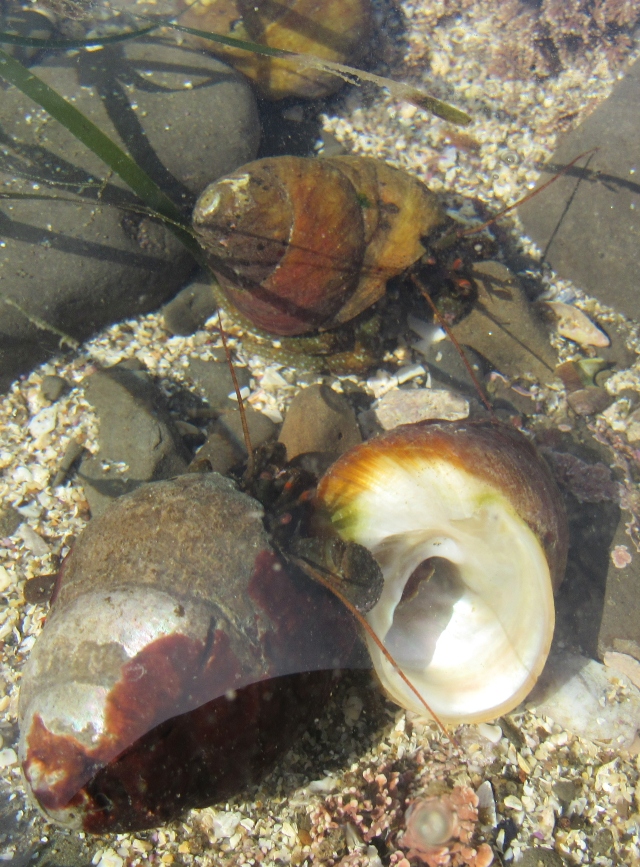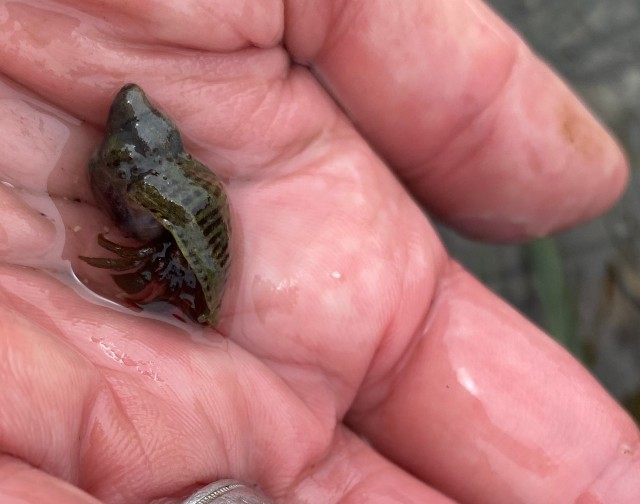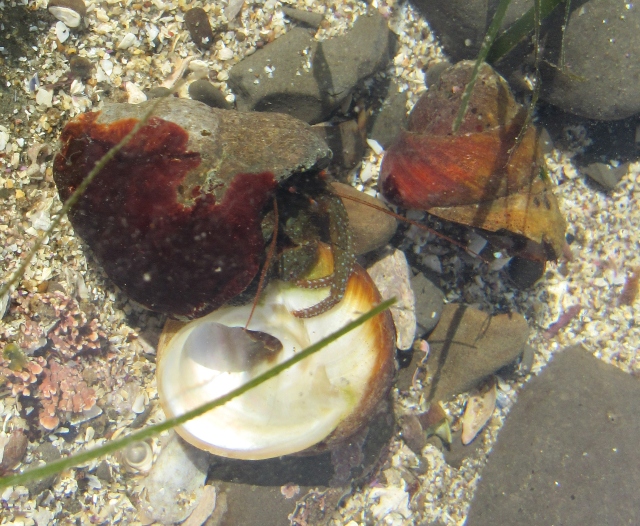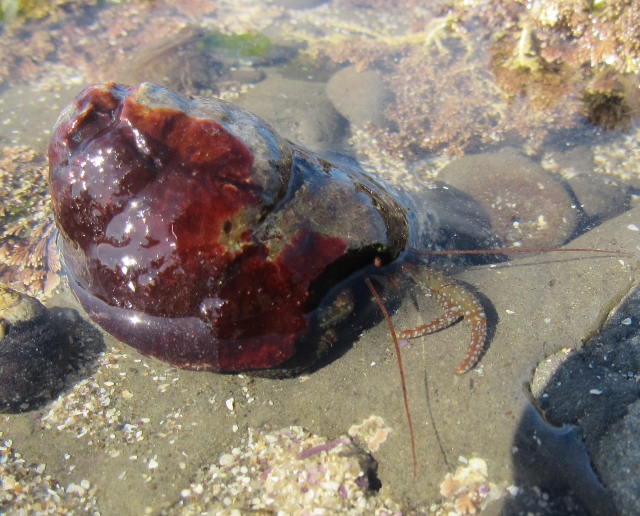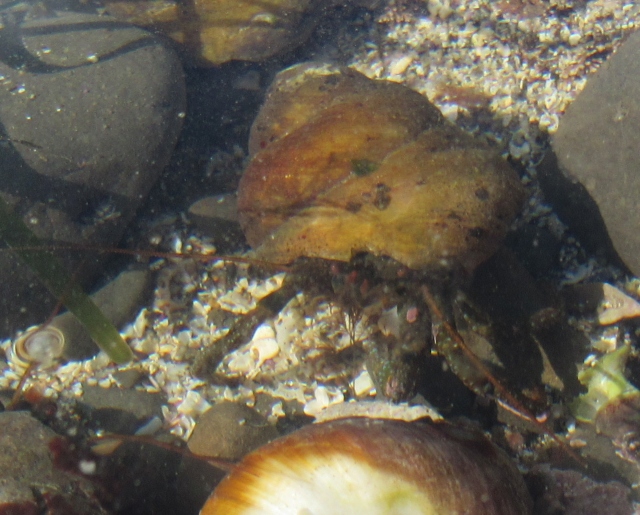Often when I look in a tidepool I see nothing of interest. By if I stare into the water long enough, I’ll start to see small creatures reveal themselves by their movements. Most of these inhabitants are well-camoflauged and only their activities give them away. A great example of this is the Marine Hermit Crab.
There are over 500 species of hermit crabs around the world, and they’ve evolved a unique body shape to fit into their shell homes. Unlike free-living crabs, their abdomens aren’t covered in a hard exoskeleton but rather a thin, soft one; their abdomens are also twisted to fit the spiral cavity of the snail shells in which they make their homes. Some species live mostly on land, while others rarely leave the water.
Like all crabs, the Marine Hermit Crab is a decapod — it has five pairs of legs, including a pair of claws. It uses its claws for defense and food shredding as well as eating. The second and third pairs of legs help the crab walk, and the last two pairs hold the crab in its shell.
Hermit Crabs are pretty easygoing about what they eat. In fact, they’ll dine on just about anything they can find in the water that surrounds them – including small fish, invertebrates such as worms, plankton and any food particles that happen to be floating by.
Hermit Crabs don’t kill the snails in whose shells they make their homes. They’re actually able to smell dead or dying snails, which can lead them to a potential shell. But competition for such shells can be fierce. They may fight to the death in pursuit of a shell. And, as they grow, they must seek out new shells in which to live.
Contrary to their name, hermit crabs live very social lives. They live in big groups, travel together and even meet up to search for food and shells.


